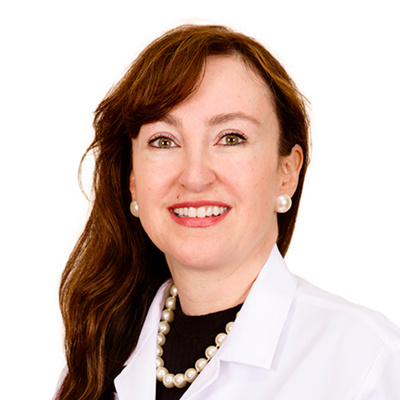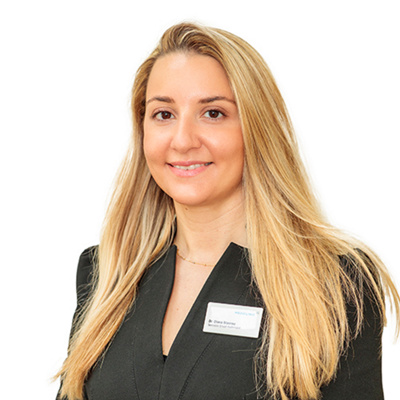Run by an all-woman team, the Breast Imaging Department is an integral part of Mediclinic City Hospital’s Breast Centre, which is the first truly specialised unit for the treatment of breast cancer, and other breast diseases, in the UAE.
To learn more about the breast centre click here
Breast imaging is a particular type of radiology imaging which focuses solely on breast health. It plays a central part in the early detection of breast cancers because it can show changes in the breast a long time before you or your doctor can feel them
The team at the breast imaging unit includes four dedicated radiographers with over 40 years collective dedicated mammography experience, two breast nurses, and 6 internationally board certified breast radiologists (South African, British, Greek and Dutch) with more than 50 years’ dedicated breast imaging experience between them.
Together the team offers the following procedures:
Mammography: digital (screening , diagnostic and contrast)
Mammography is a specific type of breast imaging that uses low-dose x-rays to detect cancer early when it can be most effectively treated. While under compression the breasts are imaged in multiple planes. Compression of the breasts helps to show subtle abnormalities and decreases the dose of radiation to the breasts. .
It plays a central part in the early detection of breast cancers because it can show changes in the breast a long time before you or your doctor can feel them.
The addition of contrast to the mammogram in select cases, allows further diagnostic review and helps exclude areas of suspicion
Tomosynthesis
We also offer 3D mammography, otherwise known as Tomosynthesis. This technique allows our radiologists to view breast tissue layer by layer, helping to see inside the breast with great detail, especially in areas with overlapping tissue. This capability has proven to reduce the number of call-backs and detect more cancers, particularly in women with dense breast tissue.
The exam is approved for all women eligible for a screening mammogram and is done at the same time as a traditional mammogram.
Advantages of 3D mammography:
- Greater chance for cancer detection
- Reduction in false-positives
- Reduction in call-backs (especially for women with dense breasts)
- Better visualisation and confidence for physicians
Ultrasound
Ultrasounds are doctor-conducted and allow patients to speak directly with an expert in their field during their ultrasound procedure regarding any symptoms and issues.
Ultrasound imaging of the breast uses sound waves to produce pictures of the internal structures of the breast and is primarily used to help diagnose breast lumps or other abnormalities your doctor may have found during a physical examination or mammogram.
MRI:
3T machine with dedicated breast coil conducted in high risk screening, implant reviews, cancer staging and for diagnostic workup.
Biopsies:
Several breast biopsy procedures are used to obtain a tissue sample from the breast. Your doctor may recommend a particular procedure based on the size, location and other characteristics of the breast abnormality.
The team is fully versed in interventional breast work including:
- Fine needle aspirations of cysts and fluid collections
- Ultrasound guided core needle and vacuum biopsies of all solid lesions or complex masses
- Mammographic stereotactic and tomosynthesis biopsies for mammographic distortions and micro calcifications not visible under ultrasound review
- MRI guided vacuum biopsies for only MRI identifiable disease.
- Fine needle aspiration biopsy- used to evaluate a lump that can be felt during a clinical breast exam and under ultrasound is likely a fluid-filled cyst. The needle is attached to a syringe that can collect a sample of cells or fluid from the lump.
- Core needle or vacuum needle biopsy–this is conducted for solid masses and is performed using a thin hollow needle to remove several tissue samples from the breast mass, slightly larger than a grain of rice. This procedure is usually conducted under sonography while lying on the ultrasound bed but other imaging techniques such as mammogram or MRI may also assist. The choice of core or vacuum needle will be determined at the time of ultrasound.
- Stereotactic vacuum biopsy–the study is done when a mass or finding is only visible on mammogram. Accordingly, your breast will be compressed between two plates and x-rays will be taken to produce stereo images to determine the exact location for the biopsy. A hollow vacuum needle will then be used to sample the tissue. You may be seated or may be on your side/lying down depending on the position of the lesion and you may need to remain in this position for 20-30 minutes while the procedure is completed.
- MRI guided vacuum needle biopsy–this is done under guidance of an MRI after an earlier MRI has identified the lesion that cannot be seen under ultrasound, and during this procedure you will lie face down on a padded scanning table where your breasts fit into dedicated cups on the table. The study is shorter than the standard MRI by about 20 minutes however it is imperative that no movement happens during this procedure.
- Post-core biopsy, stereotactic or vacuum biopsy, a titanium marker will be inserted by the radiologist at the biopsy site for further localisation of the biopsied mass/area once the result is known. If your biopsy shows cancer cells or precancerous cells, your doctor or surgeon can again locate the biopsy area to remove more breast tissue surgically. This takes less than 1 minute.
Every week the breast radiologists review patient cases prior to presenting to the multidisciplinary team meeting (MDT) with all consultants and specialists of the Breast Centre. Preparing these cases in advance, the team is fully utilising the expertise of the dedicated breast radiologists, and provides the comprehensive team with their expert opinion. The team also offers triple assessment to all patients. This is the name given to the routine that breast cancer specialists use when they are making a diagnosis of breast cancer. The triple assessment, as the name implies, has three parts: clinical examination, imaging (mammography and ultrasound) and pathology.
Only once the team has discussed all aspects of the triple assessment, is a plan put together regarding the management of your treatment. The breast surgeon consults with you and provides you with all the facts, enabling you to make an informed decision about your preferred treatment pathway.
Collaboration with the MBRU is also an important accreditation and the Unit welcomes medical students in their fourth year for teaching purposes as an introduction to breast radiology as well as conducting combined research projects.





